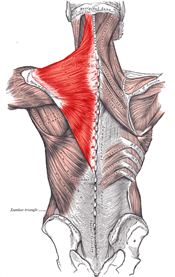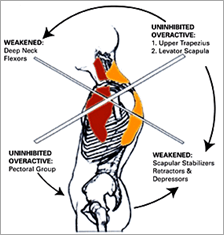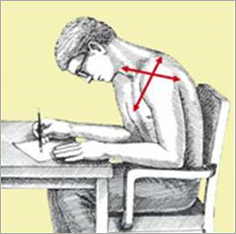 A new journal article in Physical Therapy in Sport (the journal I recently reviewed) discusses imbalance between upper and lower trapezius muscle activity and the association of subacromial shoulder impingement.
A new journal article in Physical Therapy in Sport (the journal I recently reviewed) discusses imbalance between upper and lower trapezius muscle activity and the association of subacromial shoulder impingement.
The authors studied the EMG activity of the upper and lower trapezius in subjects with and without subacromial impingement. Results show that subjects with impingement had a greater ratio of upper to trapezius to lower trapezius than the control group. There was a large difference in group size (16 impingement subjects, 32 control), which is a limitation, I wonder why they choose to include so many controls.
Asymptomatic subjects had an upper trap (UT) to lower trap (LT) ratio of 1.80 while symptomatic subjects had a ratio of 3.15. What this means is that the upper trapezius is a little more than 3 times more active than the lower trapezius during scapular plane elevation in patients with subacromial impingement. This was a statistically significant finding.
Clinical Implications
I have noticed this imbalance in many shoulder patients as well and have always attempted to emphasize lower trapezius strengthening. This is a part of what goes into my shoulder impingement treatments.
The authors also attempted to demonstrate that taping would then alter this imbalance and showed that upper trapezius activity was reduced after taping (lower trapezius remained the same). While I commend the authors for attempting to tape and alter this imbalance, I would also state that this imbalance exists for a reason, and while it would be appropriate to try to reduce upper trapezius activity, I tend to focus on the following clinical guidelines:
- Strengthen the lower trapezius. This is a common area of weakness in shoulder patients. See my article on shoulder exercises from JOSPT for some examples of good exercises for the lower trapezius.
- Educate the patient during exercises to contract the lower trapezius and not the upper trapezius while elevating the arm. I see this all the time. I have even seen patients that attempt to “retract” the shoulder during exercises and inadvertently end up with predominantly the upper trapezius. When you instruct people to “retract” or “pinch their shoulder blades” the emphasis should be back and DOWN. I bet the majority of people will actually shrug their shoulders back and UP if not instructed properly. I will work on a video of this to post over the next week or so.
- Also consider the upper-cross syndrome. This concept is discussed extensively in Janda and Chaitow’s works. Inhibition of the lower trap is often associate with inhibition of the deep neck flexors and shortening of the pectoralis muscles, upper trapezius, and levator scapulae. Attempting to address just one of these deficiencies will likely result in poor outcomes as the global issues have not all be corrected. When you look at the image below, is it difficult to figure out why this is so prevalent in our population?
As this type of posture, muscle imbalance, and shoulder pain continue to become more and more prevalent in our society, what else have you done to try to help people like this? What else have you focused on?






